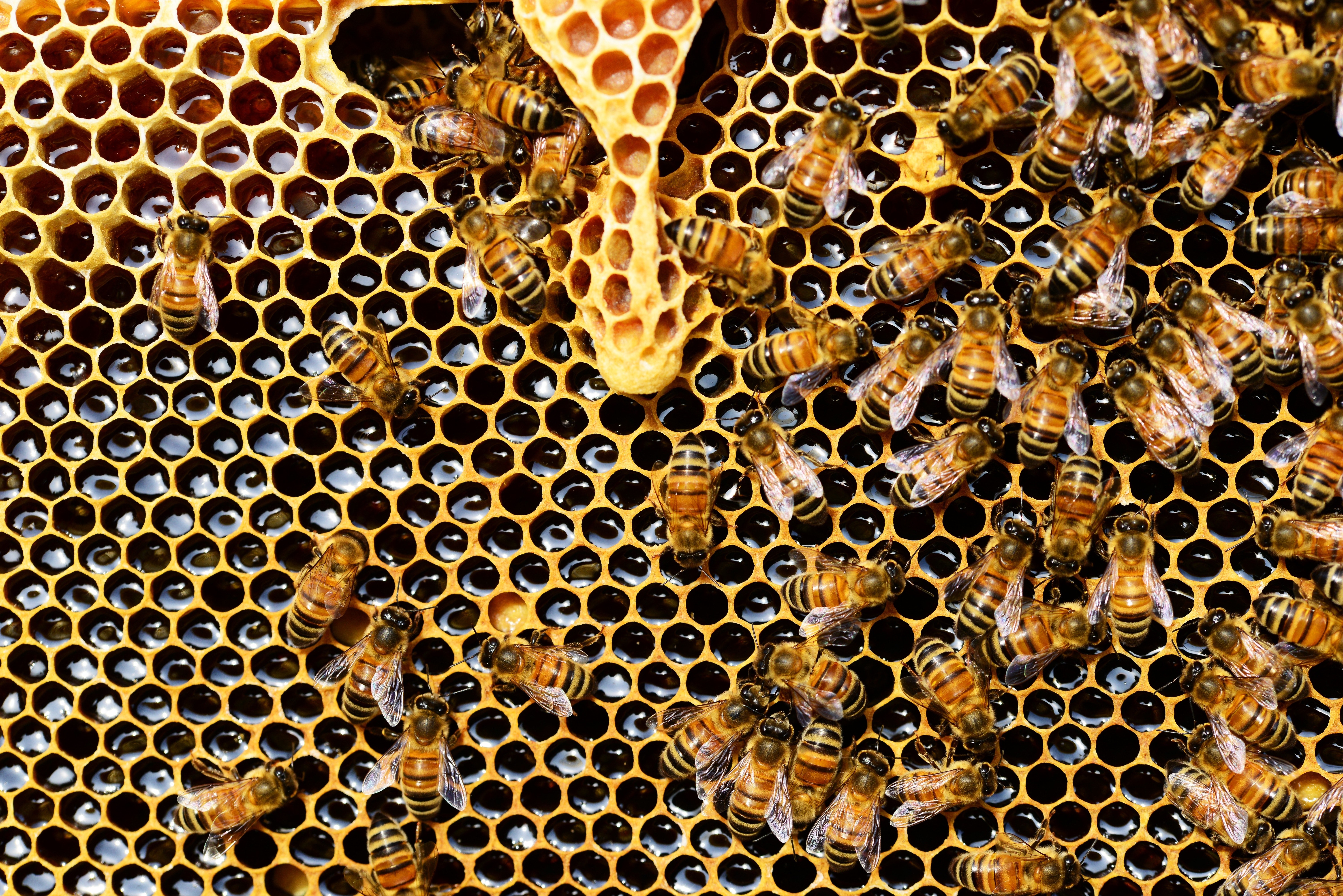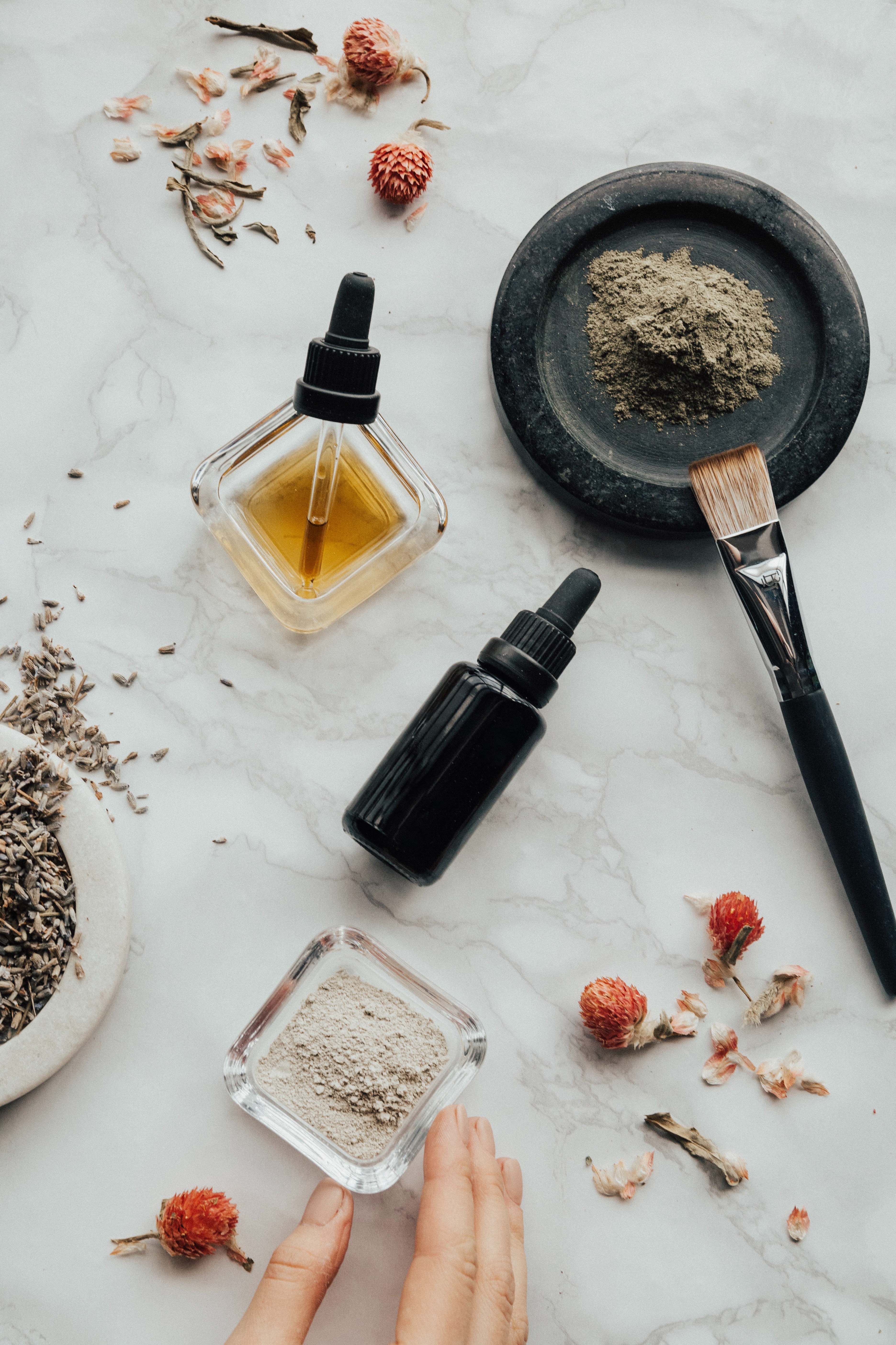Honey is a very popular natural product. Honey is not only very popular in food products but also cosmetics. Bees produce honey, beeswax, pollen, and royal jelly, all used in various biomedical and cosmetic products. Specifically, honey in skincare products is not new. For millennia, people applied honey to treat skin conditions. Ancient societies like the Egyptians, Greeks, Africans, Persian, Quaranian, Indians, and so many more have documented using honey to treat wounds and skin irritation.
In medicine today, there are several clinically approved honey-based products for wound healing. However, even with all of the scientific work conducted with honey in wound healing and inflammatory skin conditions, its effectiveness in topical skincare applications is not as concrete. So let’s talk about the science of honey in skincare. What some of the benefits of honey in skincare are, and if you should incorporate it into your skincare routine.
What is Honey?
Honey bees make honey. Bees take nectar from plants inside their colonies and pack it into the little hexagons in the honeycombs. After the cell is full, they dry it with their wings and seal it off with beeswax. The dried nectar turns into honey in the sealed-off comb. Honey contains roughly 80% sugar, a little less than 20% water, and the remainder is trace amounts of other compounds. Three types of honey are common ingredients in skincare: Manuka honey, raw honey, and medical-grade honey.

Type of Honey in Skincare
Manuka Honey
Manuka honey comes from bees that pollinate the manuka bush. The manuka bush is native to Australia and New Zealand. However, Manuka honey is produced in other parts of the world today.
Raw Honey
Raw honey is another common type of honey in skincare products. However, it is a catch-all for any honey. While Manuka honey references a specific source that bees use the nectar to make the honey, raw honey can come from any source (i.e., orange blossom, wildflower, etc.). Raw honey references the processing method and not the nectar source. Raw honey is any honey that is harvested and filtered. The filtering gets rid of chunks and debris from the harvesting process. However, it does not clean or purify the honey and remove any lingering bacteria.
Medical-Grade Honey
The last type of honey is medical-grade honey. The classification of medical-grade honey is similar to raw honey because it can refer to any honey. However, it must be processed in a specific way. The medical-grade referenced in the name means the honey was sterilized to remove bacteria. Although honey has some antibacterial activity, there can still be bacteria present. When medical-grade honey is sterilized, it ensures no bacteria are remaining. All three types of honey are used in skincare and have the same benefits.

What are the Benefits of Honey in Skincare
Due to the use of honey by ancient societies, there are a lot of claimed benefits of honey in skincare. However, the number of scientific studies to confirm these benefits in topical skin care applications is limited. There is a lot of evidence of honey’s effectiveness for conditions where the skin barrier is damaged (wounds, ulcers, etc.). But honey interacts with the skin differently when the application is on an intact skin barrier versus a damaged or wounded skin barrier. Whenever the skin barrier is damaged, ingredients can penetrate deeper into the layers of the skin. The skin barrier is more permeable, whether from a wound or an inflammatory condition like rosacea or dermatitis. The deeper the ingredients penetrate, the more they come in contact with the skin and immune cells.
Many in vitro studies show that skincare ingredients, including honey, have excellent functionality in direct contact with cells. Researchers can deliver these results because they place the ingredient directly in contact with cells. And while this is an essential first step in research, additional studies must be performed. Further studies are needed to more accurately model how the ingredient will be used before conclusions about its performance in skincare products are made. Although honey functions differently in damaged skin than when applied topically in skincare products, some great benefits of honey in skincare are backed by science.

Antibacterial
For bacteria to grow, there has to be water present. In honey, there is a high sugar concentration and a low water concentration. Additionally, sugar molecules are humectant, meanings that if there is excess water in the system,m, the sugar molecules will grab it. This does not leave enough water for bacteria to grow and keeps the honey bacteria-free. While this is the mechanism that keeps honey mostly bacteria-free when it is being produced, this is not the mechanism of the antibacterial activity of honey in skincare products.
Most skin care products that contain honey have it added at a very low concentration, and the first ingredient is water. This makes the water-to-sugar ratio in the product more favorable for bacteria to grow. However, honey still can be antibacterial, and that is because there are several molecules present in honey that also contribute to its antibacterial functionality.
Hydrogen Peroxide
One of the molecules present in honey is called named glucose oxidase. Glucose oxidase is an enzyme that converts glucose and sugar into hydrogen peroxide. It is a natural preservative. During the conversion of nectar to honey, more water is present than sugar. When glucose oxidase comes in contact with water, it breaks down into gluconic acid and hydrogen peroxide. Hydrogen peroxide is a well-established antibacterial agent that interrupts the growth of bacteria. As the nectar is converted to honey, the water level reduces as the sugar level increases. Once the water concentration is low, the glucose oxidase is inactivated and stops forming hydrogen peroxide. When honey is added to a skincare product,t, the high concentration of water and low concentration of sugar reactivate the glucose oxidase and begin forming hydrogen peroxide again.
While hydrogen peroxide is an effective antibacterial agent, its concentration in a skincare product will affect how much antibacterial protection it provides. In many products, there is not enough honey and therefore not enough hydrogen peroxide for an effective standalone antibacterial ingredient. It is also important to note the same is true for honey being an effective standalone preservative package in a product.
Bee Defensin-1
Another molecule that is thought to contribute to the antibacterial activity of honey is a peptide called defensin-1. Specifically, bee defensin-1 is a peptide; a protein produced that has been shown to have antibacterial activity. The amount of defensin-1 present in honey can vary significantly from batch to batch, and in in vitro studies, they have shown it can kill bacteria. The proposed mechanism of antibacterial activity is that the peptide is positively charged, and it disrupts the bacteria’s negatively charged cell membrane.
Methylglyoxal
Lastly, a molecule called methylglyoxal (MGO) has also been shown to contribute to honey’s antibacterial activity. MGO can be found in other types of honey, but it is found in the highest concentration in manuka honey. MGO forms during the conversion of nectar to honey. It is hypothesized that MGO interacts with the DNA in bacteria and affects its ability to replicate and move around.
These three molecules are the primary contributors to honey’s antibacterial activity in skincare products. There are some marketing claims that honey can be used to help with acne, and this is not necessarily true. Bacteria do not cause all acne, but sometimes it can be. If a clogged pore gets infected with bacteria, a pimple will form. In these cases, honey could be effective, but if the acne is caused by hormones, stress, or another trigger, then honey would not be effective for treating acne.
Anti-inflammatory
Like many ingredients from natural sources, there are antioxidant molecules that honey has. S me of those antioxidants include polyphenolics, flavonoids, vitamin C and monophenolics. All of the antioxidants function the same way they do as individual compounds. Molecules called reactive oxygen species can be secreted by cells when stressed or caused by an external factor like UV rays. When these reactive oxygen species form, they damage the surrounding tissue by degrading the extracellular matrix. Antioxidants have the ability to bind to reactive oxygen species and neutralize them. The body has natural antioxidants, but in your skincare routine, using products that contain antioxidants can provide an added layer of protection.
Like many other natural ingredients, it is essential to note the concentration of these antioxidants is not measured and cannot be controlled. Each batch of honey used to formulate a product will have a different concentration of the antioxidant ingredients. Additionally, the concentration of these ingredients is relatively low. Honey is about 80% sugar, 19% water, and the remaining 1% makes up all of the other molecules in honey so the concentration of these antioxidants is very low.
Exfoliating
Similar to the antioxidant molecules that are present in honey, there are also some enzymes and acids that can be present. The acids that are present in honey are typically remnants of whatever bees used to produce the nectar. Acids make up a minimal concentration in actual honey. There are 10+ acids that have been detected in honey, including some popular in skincare like glycolic and oxalic, but the concentration was very low. The enzymes present in honey convert nectar into honey. They are not enzymes that degrade proteins in the skin’s extracellular matrix. So due to the low concentration of both types of molecules and the enzymes not being specific to the correct type of protein using honey as a skin brightening or lightening agent will probably not give you the desired results.
Hydrating
Hydration is the greatest benefit that honey can provide. Sugars can hold a lot of water and honey contains a lot of water. Additionally, pure honey is viscous and will create an oxygen-permeable barrier on the skin. This means that pure honey can be an effective emollient and humectant. The sugar molecules act as the humectants to hold onto the water, while the viscous nature of the honey makes it form a protective layer on your skin. In a skincare product with honey as one of the ingredients, you probably will not get the same emollient benefits because the concentration of honey has to be high. However, the sugar molecules from the honey will still act like humectant moisture reservoirs.
Using Honey in Your Skincare Routine

If you are planning to use a product that contains honey, then the primary benefit that you can expect is hydration. While there might be some antioxidants that can benefit, their concentration is pretty low, and there is no evidence that the concentration would be effective. The same is likely true for antibacterial and acne-fighting ingredients as well.
In regards, when in your routine you should use it can depend on the thickness of the product and the formulation purpose. If it a cleanser that contains honey then.
References
Honey in Dermatology and Skin Care: A Review
Honey: A Therapeutic Agent for Disorders of the Skin
Antibacterial Components of Honey
Biochemical and Nutritional Components of Selected Honey Samples
Honey: An Immunomodulator in Wound Healing
Re-examining the role of hydrogen peroxide in bacteriostatic and bactericidal activities of honey
Antibacterial activity of Manuka honey and its components: An overview
Methylglyoxal—A Potential Risk Factor of Manuka Honey in Healing of Diabetic Ulcers
Advances in the Analytical Methods for Determining the Antioxidant Properties of Honey: A Review

2 Comments